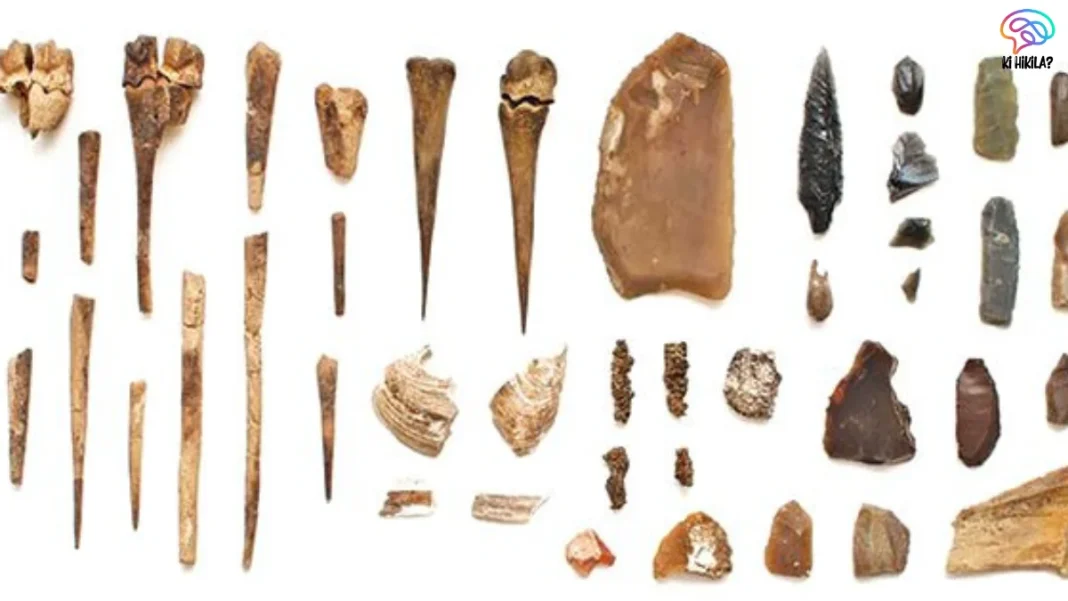Ancient Human Presence in Wallacea has been pushed back by nearly half a million years after groundbreaking discoveries in Sulawesi, Indonesia. Archaeologists recently unearthed stone tools that suggest Homo erectus lived in this island region about 1.5 million years ago—far earlier than previously believed. This remarkable finding challenges long-held assumptions about human migration, adaptability, and the capability of early humans to travel across seas.
Discovery of Stone Tools in Sulawesi
A joint team of archaeologists from Australia and Indonesia discovered small, chipped stone tools in the Soppeng region of South Sulawesi. These tools, likely used for cutting small animals and shaping rocks, were found buried under layers of soil. Scientists employed advanced radioactive dating methods to determine their age, revealing they were up to 1.48 million years old.
Supporting evidence came from animal teeth found in the same soil layers, which matched the estimated age of the tools. This discovery makes Sulawesi one of the oldest known sites of Ancient Human Presence in Wallacea, predating earlier evidence from nearby islands like Flores and Luzon.
Significance of the Findings
Until now, most researchers believed that early humans in Wallacea first appeared around one million years ago. Fossil evidence from islands like Flores and Luzon supported this view. However, the Sulawesi discovery extends the timeline significantly, showing that Homo erectus inhabited Wallacea about 500,000 years earlier than previously thought.
This has major implications for our understanding of human evolution and dispersal. It suggests that early humans had developed the skills necessary to adapt to island environments much earlier than expected. The tools show both technological capability and survival strategies, strengthening the case for advanced cognitive abilities in Homo erectus.
Implications for Human Migration Theories

The discovery also challenges traditional theories about human migration. Previously, scholars argued that Homo erectus lacked the ability to cross significant water barriers, limiting their spread to continental regions. But the evidence of Ancient Human Presence in Wallacea implies otherwise.
To reach Sulawesi, Homo erectus would have had to cross ocean gaps between the Asian mainland and the Wallacean islands. This suggests that early humans may have possessed some form of primitive sea travel technology or at least the ability to island-hop. Such a capability points to a more complex understanding of early human dispersal than previously believed.
Moreover, the discovery opens new debates about the routes early humans may have taken towards Australia and the Pacific. If Homo erectus reached Wallacea 1.5 million years ago, they may have paved the way for later human species to move further east, eventually reaching Australia.
About the Wallacea Region
Wallacea is a biogeographical region in Eastern Indonesia, consisting of islands such as Sulawesi, Lombok, Flores, Timor, and Sumbawa. Geographically, it lies between the Sunda Shelf (Borneo and Java) to the west and the Sahul Shelf (Australia and New Guinea) to the east.
The region is named after Alfred Russel Wallace, the 19th-century naturalist who co-discovered the theory of evolution alongside Charles Darwin. Wallace documented the unique flora and fauna of the region, noting its mix of Asian and Australasian species. Today, Wallacea remains an important area for studying biodiversity and early human history, especially with these new findings that expand knowledge about the Ancient Human Presence in Wallacea.
Homo Erectus and Early Human Species
Homo erectus, an extinct species of early humans, lived on Earth between 1.9 million and 110,000 years ago. Known for their upright posture, they were also skilled toolmakers and capable hunters. Their ability to adapt to various environments made them one of the most successful early human species.
The Sulawesi tools provide the earliest evidence of their presence in Wallacea, confirming that Homo erectus had spread farther than once imagined. These findings highlight their intelligence, survival skills, and adaptability in navigating new landscapes.
Expert Perspectives and Ongoing Research
Experts believe that more excavations in Wallacea could reveal even older evidence of early humans. The discovery has sparked renewed interest in the region, with archaeologists planning further digs to uncover fossils or more tools that could shed light on the lives of Homo erectus.
Researchers also stress the importance of understanding how these ancient humans managed to survive in an island ecosystem. Did they hunt large mammals, rely on smaller prey, or gather marine resources? These questions remain open, but the tools already suggest versatile survival strategies.
Conclusion

The latest discoveries in Sulawesi significantly alter our understanding of the Ancient Human Presence in Wallacea. By pushing back the timeline of human habitation to 1.5 million years ago, these findings challenge long-standing theories about human migration and early sea travel.
Homo erectus, once thought to be limited to continental Asia, clearly had the ability to adapt, innovate, and possibly even navigate seas much earlier than expected. This not only changes our perception of early human capabilities but also sheds new light on the pathways that ultimately led to the spread of humanity across the globe.
As research continues, Wallacea may yet reveal more secrets about the origins and journeys of our ancient ancestors.



